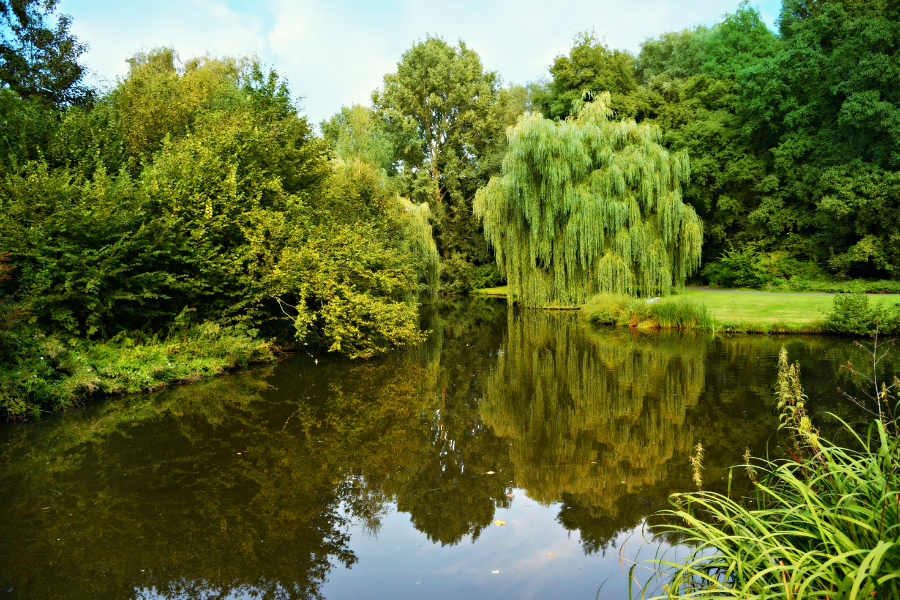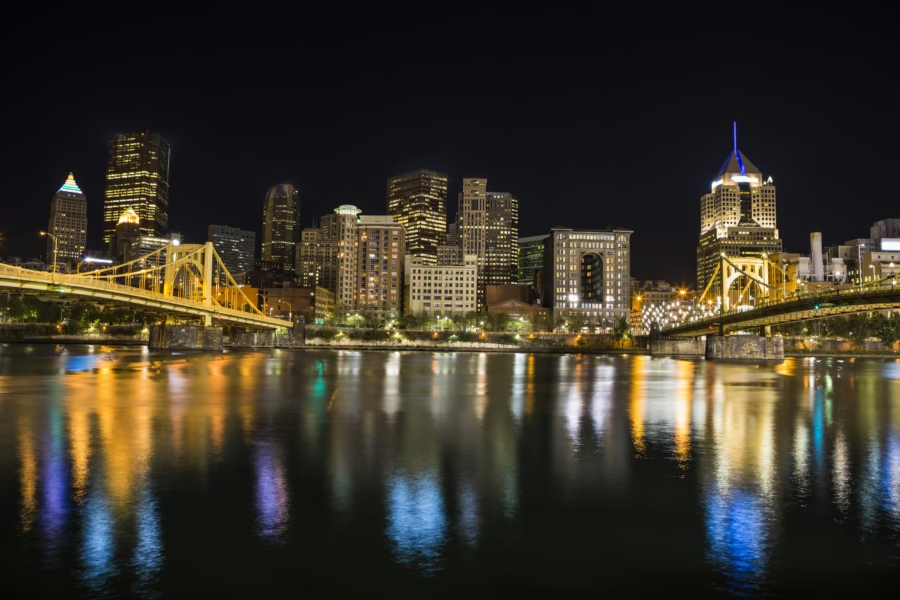Deep in the heart of the Carrollton-Hollygrove neighborhood in western New Orleans stands a dramatic structure on an open lot in contrast with the surrounding shotgun-style houses. The structure stands on a 50-ft wide swath known as the “Greenline,” a former railroad corridor tucked out of view between houses and backyards. For 97 years, the Greenline served as a rail-bed for the Illinois Central Railroad, cutting diagonally across the community until it was decommissioned in 1955. Years later, in order to address drainage and flooding problems in the neighborhood, the Sewerage & Water Board of New Orleans (SWBNO) re-purposed the right-of-way by constructing a 20’ x 10’ underground drainage canal. The surface corridor remained unused until 2010 when the Hollygrove Community and the Tulane City Center in coordination with the Tulane School of Architecture formed an agreement with SWBNO to use the space in the form of public park space, stormwater management systems, community gardens, and urban farms. The structure that stands today is an architectural award winning green infrastructure project that collects and reuses almost 50,000 gallons of rainwater per year by funneling the water into nearby rain gardens, interactive surfaces, and a cistern.

The Hollygrove Shade-Water Pavilion at the Hollygrove Greenline.
The Hollygrove Greenline Project is one of several demonstration projects on public land owned by SWBNO that eases pressure on the drainage system, improves water quality, and provides shared space for the community. The SWBNO owns and operates 160 miles of covered canals, 100 miles of open canals, 24 drainage pumping stations with 121 pumps that have the capacity of 375,000 gallons per second. New Orleans is the third wettest city in the nation, receiving more than five feet of rainfall each year. The pumping system can manage one inch of rain over an hour, and half an inch every hour after that. By retaining rainfall where it lands, green infrastructure reduces flooding and improves the quality of our surrounding water bodies. Water that is retained also recharges the shallow groundwater which can help stabilize the clay and organic soils and reduce subsidence.
In 2014, the SWBNO developed and implemented the Green Infrastructure Plan as a formal commitment to address a consent decree from the Environmental Protection Agency and Department of Justice. SWBNO agreed to commit $500,000 per year, averaged over a five-year period for green infrastructure demonstration projects, education, and outreach. SWBNO has issued two rounds of RFP’s and funded 10 unique projects spread out across the city with diverse partners in public, private, and non-profit organizations. SWBNO Environmental Affairs Department has grown to accommodate the new direction of stormwater management and environmental planning. The Environmental team at SWBNO works closely with various departments, City agencies, and many community stakeholders to implement the new program.
The projects are designed to reduce risk from flooding and subsidence by creating spaces to capture rainwater in the urban landscape. They are designed to beautify neighborhoods, improve health, and provide opportunities for recreation. When all the elements of a neighborhood are working together to reduce risk and enhance development potential, we are really adapting to thrive.
A shining example of green infrastructure at work is across the Mississippi River in Algiers: a small sewer pump station surrounded by an open lot in the Aurora Gardens Neighborhood. The lot, on a residential intersection, is owned and maintained by SWBNO and provides an ideal location for green infrastructure bio-retention. The Aurora Rain Garden project channels water off the streets to circulate around two rain gardens for infiltration and filtration before discharging back into the drainage system. Clay soil was removed and replaced with a gravel layer, sandy soil, and native plants for increased capacity. The Aurora Rain Garden will also collect the rain from the roof of the pump station in a flow-through planter. The site is located next door to the Aurora Community Garden and has engaged the neighborhood residents and encouraged them to develop green infrastructure on their own residential lots.

Aurora Rain Gardens at the SWBNO Aurora Sewer Pump Station
SWBNO has recently bolstered its outreach strategy and made a commitment to grow water literacy. Education and outreach initiatives are designed for citizens of all ages so that they will be inspired as watershed stewards. The SWBNO Environmental Team works throughout the New Orleans community to reach a diverse audience with watershed and water quality information, with the intention of educating citizens on how our water system works, and how individual actions can impact water quality. The team regularly hosts tours of SWBNO facilities and uses these new green infrastructure sites located around the city for demonstration and education.

Interim Director of the Tulane City Center, Maggie Hansen, SWBNO Executive Director, Cedric Grant, and GNOF President & CEO, Andy Kopplin, along with members of the Lafayette Academy marching band, cut the ribbon at the SWBNO Hollygrove Greenline.
Another example hidden on top of the SWBNO Downtown Administration building is the St. Joseph St. Green Roof, surrounded by the dense urban fabric of the New Orleans Central Business District. The project covers over 10,000 square feet of the office building and has the capacity to capture over 15,000 gallons of rain water per event. The roof will provide additional insulation for the building and help reduce the urban heat island effect in the area. The roof utilizes several types of native plants including wetland plants, meadow grasses, herbs, and extensive sedum. In addition to the vegetated roof, SWBNO has also installed a blue roof to temporarily detain the water during peak runoff events and slowly discharge later. While the green roof is not visible from the street, the SWBNO intends to hold regular tours of the new facility to promote this technique for future development and retrofits in the downtown area.While the SWBNO has led the way by integrating green infrastructure into the urban landscape, non-profit organizations, neighborhood groups, homeowners, private developers, and philanthropy have jumped on board the City of New Orleans green infrastructure train. The Water Collaborative of Greater New Orleans is a network of architects, engineers, educators, urban planners, business-people and community leaders working together to improve water management in Southeast Louisiana. The Front Yard Initiative is an incentive program that reimburses eligible homeowners $2.50 per square foot of paving removed- up to 500 square feet- for a max of $1,250. Since 2013, the Greater New Orleans Foundation, the community foundation of Southeast Louisiana, has been implementing programs and making grants aimed at building the local movement working on the region’s urban water management challenges and opportunities.
The SWBNO is a critical partner of ours in scaling green infrastructure initiatives in New Orleans. They’ve shown great leadership on various levels from designing and constructing important green infrastructure projects to educating the public about their significance
These grass roots efforts are empowering community leaders and individuals to take action on their lots and across their neighborhoods.
It’s a new day in the City of New Orleans where living with water is the new theme. So whether you come by train, plane or automobile be sure to keep a lookout for all the work going on as neighborhoods and communities across the city embrace green infrastructure.

SWBNO Downtown Administration Building Green Roof.
More information about the SWBNO Green Infrastructure Program is available at:



